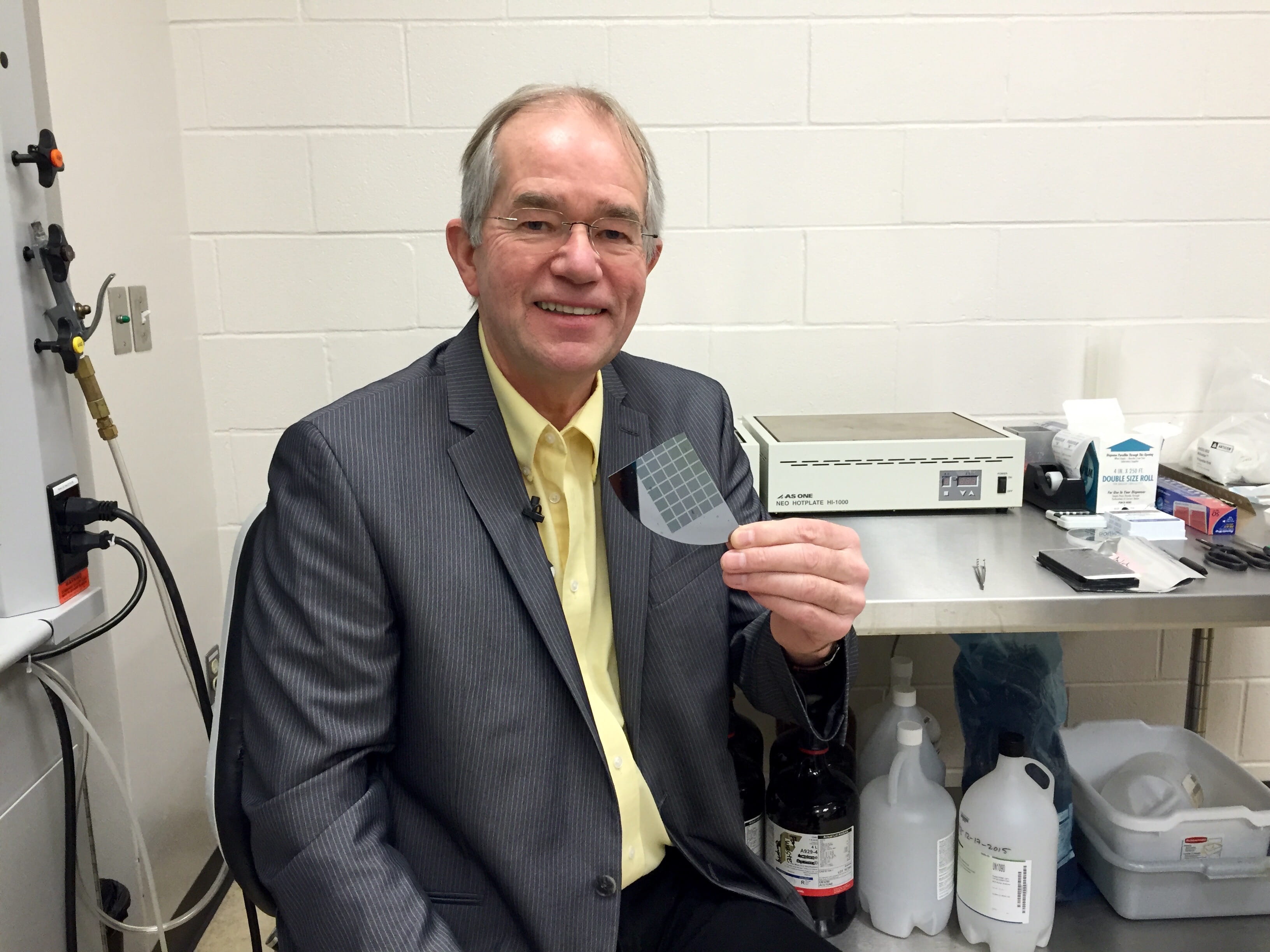UTA researcher earns grant to study fundamental physics of photonic band dynamics
A University of Texas at Arlington researcher is investigating the fundamental physics of how light is contained within photonic lattices.

Robert Magnusson, the Texas Instruments Distinguished University Chair in Nanoelectronics and an electrical engineering professor, will use a $360,000 National Science Foundation grant for his research into band flips and bound states in leaky-mode resonant photonic lattices.
Photonic lattices are structures of materials – such as nanopatterned silicon films on a glass substrate or arrays of nanowires – with differing refractive qualities that are arranged so they can capture, store, and release light. Like ordinary crystals, photonic lattices have an energy band structure with gaps of different widths. A bound state in the lattice means that light cannot escape the lattice, while a leaky mode allows the light to come through.
When light shines on a lattice, it resonates with the leaky modes and reflects or transmits in a narrow band. The location of the resonance in the wavelength spectrum has intrinsic properties, and fundamentally there is a resonant leaky mode on one edge of the band, but no radiation on the other. Recently, scientists have realized that the non-leaky edge is related to the bound state, which is one key point that Magnusson is investigating under the project.
“We have identified how this band structure comes about and we understand, in part, how the gap between the leaky and non-leaky states works. We can adjust the separation of the two edges and close the gap so the modes superimpose, but we can also make the modes pass by each other and flip their energy positions,” Magnusson said.
“The flip is explained by modeling and understanding the fundamental physics of this class of devices whereby existing science is also understood. We’re studying the band dynamics of leaky photonic lattices and performing experiments to verify all of these theories.”
Any discoveries Magnusson makes in the course of his research could potentially be used to create new low-power modulators for optical communications systems such as in the current internet or applied later in other devices as technology advances.
Magnusson’s grant is an example of data-driven discovery, one of the themes of UTA’s Strategic Plan 2020: Bold Solutions | Global Impact, said Jonathan Bredow, chair of the Department of Electrical Engineering.
“Dr. Magnusson is a leading global authority in leaky-mode resonance technology with a long-term track record in the field. This new grant will allow him to expand his knowledge of the fundamental science involved,” Bredow said. “His findings have the potential to influence research and discovery in the field for years to come.”
-- Written by Jeremy Agor